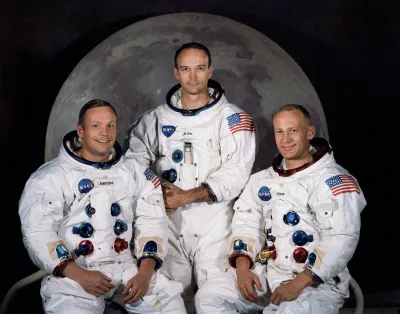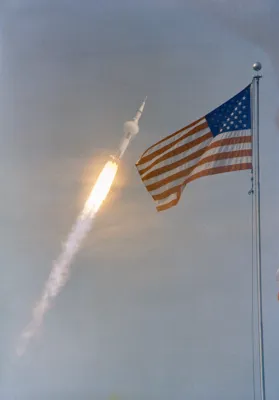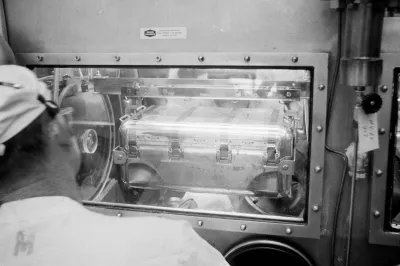On July 20, 1969, Apollo 11 astronauts Neil Armstrong, Michael Collins, and Edwin “Buzz” Aldrin achieved a milestone by landing on the Moon and returning safely to Earth. This monumental event fulfilled President John F. Kennedy’s 1961 challenge to land a man on the Moon and return him before the decade’s end.
“Houston, Tranquility Base here, the Eagle has landed.” “That’s one small step for [a] man, one giant leap for mankind.” “Magnificent desolation.” These iconic phrases mark the moment humanity made history with its first lunar landing.
Preparing for the Historic Mission
In the days leading up to the launch, Apollo 11’s crew was busy with final preparations. On July 14, Neil Armstrong, Michael Collins, and Buzz Aldrin conducted a virtual press conference, appearing relaxed and focused.



The crew went through meticulous planning and training, including briefings on their flight plans and practicing in the Lunar Module simulator.



The Launch
July 16, 1969, marked the beginning of Apollo 11’s journey with a dramatic liftoff from Launch Pad 39A at NASA’s Kennedy Space Center.



The Saturn V rocket soared into the sky, leaving behind a sea of spectators, including notable figures like Lady Bird Johnson and Vice President Spiro Agnew.


The rocket’s successful launch was a testament to the rigorous preparation and expertise of NASA’s team.



The Moon Landing
On July 20, 1969, the Lunar Module “Eagle” touched down on the Moon’s surface. Neil Armstrong’s historic first step was followed by Buzz Aldrin’s iconic moments on the lunar surface.



The astronauts set up experiments, collected samples, and planted the American flag. Their work on the Moon was captured in numerous photographs, including the famous image of Buzz Aldrin saluting the flag.



Returning to Earth
After a successful lunar mission, Apollo 11’s crew prepared for their return journey. On July 21, the Lunar Module rejoined the Command Module “Columbia,” and the spacecraft began its journey back to Earth.



The splashdown on July 24 was captured from a recovery helicopter, and the astronauts were safely brought aboard the USS Hornet.



Post-Mission Activities
Following their splashdown, Neil Armstrong, Buzz Aldrin, and Michael Collins were placed in quarantine to ensure there were no contaminants from the Moon.




The Moon rocks collected during the mission were quickly transported from the USS Hornet to Houston’s Lunar Receiving Laboratory (LRL) for analysis. The meticulous handling of the lunar samples showcased NASA’s commitment to scientific excellence.





Key Moments in July 1969
- July 1: Prince Charles is invested as The Prince of Wales.
- July 3: Newport Jazz Festival attracts 78,000 attendees.
- July 4: John Lennon and the Plastic Ono Band release “Give Peace a Chance.”
- July 11: David Bowie’s “Space Oddity” hits the airwaves.
- July 14: “Easy Rider” premieres, featuring Dennis Hopper and Jack Nicholson.
- July 18: NASA greenlights the Skylab program.
- July 26: Sharon Sites Adams becomes the first woman to sail solo across the Pacific.
- July 31: Mariner 6 performs a close fly-by of Mars, sending back crucial data.
The Apollo 11 mission not only marked a significant achievement in space exploration but also captured the imagination of the world. It remains a symbol of human ingenuity and determination.








